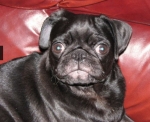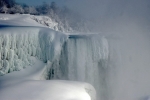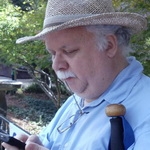CENTRAL APNEA - Sleepyhead Data - BiPap to Auto SV
- Snorkle Man
- Posts: 10
- Joined: Mon Apr 23, 2012 9:41 am
- Location: NJ
CENTRAL APNEA - Sleepyhead Data - BiPap to Auto SV
So I have 3 nights in the books now...and none went very well from my perspective - or my wife's Still trying to get adjusted. In fact, I seem to spend more time adjusting my mask then I do sleeping...and the leaks are many and often.
This morning I pulled my data and wanted to get a crash course in what I'm looking at...
Is anyone willing to look at these early results and give me an idea of what's occuring? Obviously I'm not looking for medical advice, more of just how to read the data and what is occurring from an observation perspective...
I can send over whatever data is needed...just let me know how to do that.
FYI - I've sent a PM to Pugsy but wanted to throw this out to the entire group as well.
This morning I pulled my data and wanted to get a crash course in what I'm looking at...
Is anyone willing to look at these early results and give me an idea of what's occuring? Obviously I'm not looking for medical advice, more of just how to read the data and what is occurring from an observation perspective...
I can send over whatever data is needed...just let me know how to do that.
FYI - I've sent a PM to Pugsy but wanted to throw this out to the entire group as well.
_________________
| Mask: Mirage Quattro™ Full Face CPAP Mask with Headgear |
| Additional Comments: Sleepyhead |
Last edited by Snorkle Man on Wed Jun 06, 2012 4:26 pm, edited 2 times in total.
Re: Sleepyhead data - what does it all mean?
Take a look in my signature line...Glossary and the tutorial under construction..I think many of your questions will be answered there.
For now, for newbies...concentrate on leak line and events themselves. Understand AHI and what it means as well as the categories of events that make up AHI.
We like to see AHI less than 5 and leak line below large leak territory as much as possible. We don't expect newbies to have perfect leak lines while adjusting to all this. With PR S1 machines...large leak territory is around 90 L/min. ResMed machine is at 24 L/min
My standard instructions are below for posting images here for others to see.
Open the image to full size so it is easily read.
I use Vista snipping tool to create a screen shot and crop the image at the same time.
Prt/scr key will also take a screen shot if using XP. If laptop is used sometimes the Fn key has to be pushed at the same time as the prt/scr key
I think windows 7 Home Premium has the snipping tool, Basic may not.
Once the screen shot is created save it in jpg format.
Upload the image to a host site. I use Photobucket it is free, there are others.
Once the image is uploaded then copy the ENTIRE IMG address. Be sure to include the opening and closing IMG in brackets. Paste that copied address into a post here.
Use the preview button. If you can't see the image try again because if you can't see it we can't.
For now, for newbies...concentrate on leak line and events themselves. Understand AHI and what it means as well as the categories of events that make up AHI.
We like to see AHI less than 5 and leak line below large leak territory as much as possible. We don't expect newbies to have perfect leak lines while adjusting to all this. With PR S1 machines...large leak territory is around 90 L/min. ResMed machine is at 24 L/min
My standard instructions are below for posting images here for others to see.
Open the image to full size so it is easily read.
I use Vista snipping tool to create a screen shot and crop the image at the same time.
Prt/scr key will also take a screen shot if using XP. If laptop is used sometimes the Fn key has to be pushed at the same time as the prt/scr key
I think windows 7 Home Premium has the snipping tool, Basic may not.
Once the screen shot is created save it in jpg format.
Upload the image to a host site. I use Photobucket it is free, there are others.
Once the image is uploaded then copy the ENTIRE IMG address. Be sure to include the opening and closing IMG in brackets. Paste that copied address into a post here.
Use the preview button. If you can't see the image try again because if you can't see it we can't.
_________________
| Machine: AirCurve™ 10 VAuto BiLevel Machine with HumidAir™ Heated Humidifier |
| Additional Comments: Mask Bleep Eclipse https://bleepsleep.com/the-eclipse/ |
I may have to RISE but I refuse to SHINE.
Re: Sleepyhead data - what does it all mean?
A word about clear airway events (centrals) for information in general. Newbies tend to panic when they see centrals and their is no reason to. We don't even start worrying about them until we see a lot of them that can't be explained away and they are happening every hour all night long, every night.
Copied from my "central" and AHI explanation.
A quick word about "centrals" or "clear airway" events...these are cessation of breathing while the airway is open as flagged by the machine. They may or may not be "true" centrals that warrants concern if we saw a lot of them (and it takes more than a central index of 2.0 to cause concern). Centrals are common at sleep onset and sometimes we even hold our breath (that is open airway cessation of breathing) when turning over in bed and don't know it. The machine only has one dimension to work with when sensing and recording open airway cessation of breathing and that is air flow only. In a sleep lab setting the tech has EEG leads to determine sleep stage and thoracic belts to measure thoracic effort. Some of what our machines report would likely be tossed out the window in a sleep lab setting.
People seem to panic when they see "central" apneas but unless there are a large number of them and presenting with associated desats and can't be blamed on sleep onset or whatever...we have to sort of put them aside and try not to worry about them.
We don't treat centrals with an increase in cpap pressure except in those high level machines that are working sort of like ventilators (another story I won't go into now since it is not needed).
So when evaluating your AHI....and how well things are responding to pressure you need to remove any central index from the equation because we don't try to fix them with cpap machines with an increase in pressure anyway.
The AHI has 3 components..
Central index which is NOT an obstructive component because there is no collapse of the airway to cause an obstruction.
Obstructive Apnea Index...this is an obstructive component because there is either a full or partial collapse of the airway causing the measured reduction in air flow to meet the obstructive apnea definition.
Hyponea Index...these is an obstructive component because there is likely a partial collapse of the airway resulting in the measured reduction in flow to meet hyponea definition.
So when evaluating your night by looking at the AHI....mentally remove the central index from the total and evaluate only the obstructive component index. In your case removing the central index significantly lowers the AHI to obstructive components only and well withing acceptable limits and thus no need for any changes to be made (like a pressure change).
What would we do if the central index was higher than we want? We would first look at the actual reports and the event graphs to see when the centrals were being flagged. If in a cluster at sleep onset..do nothing. If in clusters associated with awakenings..do nothing. I once saw a report where the guy had a central index of 10.0...one might think holy crap...he has central sleep apnea or complex sleep apnea (mix of obstructive and central) but when looking at his reports in detail the centrals were all in huge clusters at sleep onset or in the middle of the night when he was waking up and tossing and turning for an hour or more trying to go back to sleep.
All he did was stop the laying in bed tossing and turning for a few nights and the central index plummeted to less than 1. Once we realized that these "centrals" were awake centrals or semi awake sleep onset centrals that were no cause for alarm he could go back to his normal routine of tossing and turning if he wished because we knew that was the cause of the large number of centrals and not some scary diagnosis.
What do we do if we can't explain away large numbers of centrals? That is a question for another time but we look at a lot of things including history and we suggest that their doctor be alerted for sure.
Copied from my "central" and AHI explanation.
A quick word about "centrals" or "clear airway" events...these are cessation of breathing while the airway is open as flagged by the machine. They may or may not be "true" centrals that warrants concern if we saw a lot of them (and it takes more than a central index of 2.0 to cause concern). Centrals are common at sleep onset and sometimes we even hold our breath (that is open airway cessation of breathing) when turning over in bed and don't know it. The machine only has one dimension to work with when sensing and recording open airway cessation of breathing and that is air flow only. In a sleep lab setting the tech has EEG leads to determine sleep stage and thoracic belts to measure thoracic effort. Some of what our machines report would likely be tossed out the window in a sleep lab setting.
People seem to panic when they see "central" apneas but unless there are a large number of them and presenting with associated desats and can't be blamed on sleep onset or whatever...we have to sort of put them aside and try not to worry about them.
We don't treat centrals with an increase in cpap pressure except in those high level machines that are working sort of like ventilators (another story I won't go into now since it is not needed).
So when evaluating your AHI....and how well things are responding to pressure you need to remove any central index from the equation because we don't try to fix them with cpap machines with an increase in pressure anyway.
The AHI has 3 components..
Central index which is NOT an obstructive component because there is no collapse of the airway to cause an obstruction.
Obstructive Apnea Index...this is an obstructive component because there is either a full or partial collapse of the airway causing the measured reduction in air flow to meet the obstructive apnea definition.
Hyponea Index...these is an obstructive component because there is likely a partial collapse of the airway resulting in the measured reduction in flow to meet hyponea definition.
So when evaluating your night by looking at the AHI....mentally remove the central index from the total and evaluate only the obstructive component index. In your case removing the central index significantly lowers the AHI to obstructive components only and well withing acceptable limits and thus no need for any changes to be made (like a pressure change).
What would we do if the central index was higher than we want? We would first look at the actual reports and the event graphs to see when the centrals were being flagged. If in a cluster at sleep onset..do nothing. If in clusters associated with awakenings..do nothing. I once saw a report where the guy had a central index of 10.0...one might think holy crap...he has central sleep apnea or complex sleep apnea (mix of obstructive and central) but when looking at his reports in detail the centrals were all in huge clusters at sleep onset or in the middle of the night when he was waking up and tossing and turning for an hour or more trying to go back to sleep.
All he did was stop the laying in bed tossing and turning for a few nights and the central index plummeted to less than 1. Once we realized that these "centrals" were awake centrals or semi awake sleep onset centrals that were no cause for alarm he could go back to his normal routine of tossing and turning if he wished because we knew that was the cause of the large number of centrals and not some scary diagnosis.
What do we do if we can't explain away large numbers of centrals? That is a question for another time but we look at a lot of things including history and we suggest that their doctor be alerted for sure.
_________________
| Machine: AirCurve™ 10 VAuto BiLevel Machine with HumidAir™ Heated Humidifier |
| Additional Comments: Mask Bleep Eclipse https://bleepsleep.com/the-eclipse/ |
I may have to RISE but I refuse to SHINE.
Re: Sleepyhead data - what does it all mean?
And I'll throw in my standard advice to newbies who are hitting some rough sledding in the task of learning to sleep with the hose: Sleeping with a six foot hose on your nose is NOT natural and it definitely is a skill that is harder for some of us to learn than others. And it's easy to get discouraged at fighting the mask all night. And that can lead to real problems with CPAP-induced insomnia. You may find some useful tips in how to get through your adjustment period in my Taming the CPAP-Induced Insomnia Monster. There's a link in my signature.Snorkle Man wrote:So I have 3 nights in the books now...and none went very well from my perspective - or my wife's Still trying to get adjusted. In fact, I seem to spend more time adjusting my mask then I do sleeping...and the leaks are many and often.
_________________
| Machine: DreamStation BiPAP® Auto Machine |
| Mask: Swift™ FX Nasal Pillow CPAP Mask with Headgear |
| Additional Comments: PR System DreamStation and Humidifier. Max IPAP = 9, Min EPAP=4, Rise time setting = 3, minPS = 3, maxPS=5 |
Re: Sleepyhead data - what does it all mean?
We need to get the fiddling with the mask all night thing sorted out first and foremost.
Have you see the video on fitting your mask and read Janknitz hints?
If not, let me know and I will find the links.
Your pressure needs appear to be high and high pressures present their own special challenges for getting masks to keep a good seal. Mask fit, seal and getting used to...are the hardest part of this therapy.
Way too many clear airway events but since you were likely awake fiddling with the mask for a good bit of the night we really can't evaluate the centrals. Your leak line is fine for your mask and your pressure needs for May 7 but the other night (with the horrible AHI) leak was awfully bad..so bad we can't really judge that night because you spent a lot of time well above large leak territory.
Obstructive component of your AHI is well controlled.
You are using the ramp...are you fitting your mask with the lower ramp pressure or the pressure you need all night?
You probably need to consider a mask liner and possibly Padacheeks anti leak strap if you want to continue with this particular full face mask.
http://www.padacheek.com/
Are you a dedicated mouth breather or is it possible for you to use a nasal interface mask? Can you normally breathe through your nose just fine?
I copied one of your reports here for others to see.

Have you see the video on fitting your mask and read Janknitz hints?
If not, let me know and I will find the links.
Your pressure needs appear to be high and high pressures present their own special challenges for getting masks to keep a good seal. Mask fit, seal and getting used to...are the hardest part of this therapy.
Way too many clear airway events but since you were likely awake fiddling with the mask for a good bit of the night we really can't evaluate the centrals. Your leak line is fine for your mask and your pressure needs for May 7 but the other night (with the horrible AHI) leak was awfully bad..so bad we can't really judge that night because you spent a lot of time well above large leak territory.
Obstructive component of your AHI is well controlled.
You are using the ramp...are you fitting your mask with the lower ramp pressure or the pressure you need all night?
You probably need to consider a mask liner and possibly Padacheeks anti leak strap if you want to continue with this particular full face mask.
http://www.padacheek.com/
Are you a dedicated mouth breather or is it possible for you to use a nasal interface mask? Can you normally breathe through your nose just fine?
I copied one of your reports here for others to see.

_________________
| Machine: AirCurve™ 10 VAuto BiLevel Machine with HumidAir™ Heated Humidifier |
| Additional Comments: Mask Bleep Eclipse https://bleepsleep.com/the-eclipse/ |
I may have to RISE but I refuse to SHINE.
Re: Sleepyhead data - what does it all mean?
Found out additional information.
Diagnosis.....central sleep apnea...obstructive apnea not mentioned (no wonder those events were well controlled )
I doubt we can explain away enough of those centrals with mask fidgeting but need to work on mask fit anyway no matter what machine. Other than telling you that cpap doesn't help centrals ..were you told anything about the bipap and what they expect or possible need for the high dollar ASV type of machine?
Might want to edit your subject topic to mention diagnosis of central sleep apnea to get the attention of those forum members who know a whole lot more about centrals than I do.
Diagnosis.....central sleep apnea...obstructive apnea not mentioned (no wonder those events were well controlled )
I doubt we can explain away enough of those centrals with mask fidgeting but need to work on mask fit anyway no matter what machine. Other than telling you that cpap doesn't help centrals ..were you told anything about the bipap and what they expect or possible need for the high dollar ASV type of machine?
Might want to edit your subject topic to mention diagnosis of central sleep apnea to get the attention of those forum members who know a whole lot more about centrals than I do.
_________________
| Machine: AirCurve™ 10 VAuto BiLevel Machine with HumidAir™ Heated Humidifier |
| Additional Comments: Mask Bleep Eclipse https://bleepsleep.com/the-eclipse/ |
I may have to RISE but I refuse to SHINE.
- JohnBFisher
- Posts: 3821
- Joined: Wed Oct 14, 2009 6:33 am
Re: CENTRAL APNEA - Sleepyhead data - what does it all mean?
Wowser! Snorkle Man, if you do not have a follow up with your sleep doctor scheduled, I would be certain to make one as soon as possible. You had on the report that Pugsy posted, an AHI of over 26 and over 22 of it was due to central sleep apnea. In other words, with BiPAP therapy you continue to suffer moderate to severe central sleep apnea. Due to the low number of obstructive events, it is likely this is (as noted in your other threads) Primary Central Sleep Apnea. That is, it's not a result of the high pressure. You just don't have the respiratory drive that most everyone else has.
At this point, I would (a) continue to try to get adjusted to the BiPAP, the mask, and the daily routine. And (b) schedule an appointment with your sleep doctor and show the data. Your doctor might want you to take your SD card to your DME. Depends on the doctor and the DME. My doctor is happy for me to bring the reports and we review them.
From my layman's point of view, it does not appear that your current therapy is properly addressing your central sleep apnea. You need certainly qualify (per diagnostic criteria) for an ASV unit. As I mentioned earlier, It's possible that the doctor (and your insurance company) want to see you try to make BiPAP work before they allow an ASV titration and use of an ASV unit. They are pretty expensive (about $4,000 to $6,000 from a DME). So, insurance companies often request extra effort before allowing you to go to an ASV unit.
Remember, I am not offering medical advice. Rather, I'm offering "what I would do, if I were in your shoes". It's definitely time to discuss the situation with your doctor.
Hope that helps.
At this point, I would (a) continue to try to get adjusted to the BiPAP, the mask, and the daily routine. And (b) schedule an appointment with your sleep doctor and show the data. Your doctor might want you to take your SD card to your DME. Depends on the doctor and the DME. My doctor is happy for me to bring the reports and we review them.
From my layman's point of view, it does not appear that your current therapy is properly addressing your central sleep apnea. You need certainly qualify (per diagnostic criteria) for an ASV unit. As I mentioned earlier, It's possible that the doctor (and your insurance company) want to see you try to make BiPAP work before they allow an ASV titration and use of an ASV unit. They are pretty expensive (about $4,000 to $6,000 from a DME). So, insurance companies often request extra effort before allowing you to go to an ASV unit.
Remember, I am not offering medical advice. Rather, I'm offering "what I would do, if I were in your shoes". It's definitely time to discuss the situation with your doctor.
Hope that helps.
_________________
| Mask: Quattro™ FX Full Face CPAP Mask with Headgear |
| Additional Comments: User of xPAP therapy for over 20 yrs. Resmed & Respironics ASV units with EEP=9cm-14cm H2O; PSmin=4cm H2O; PSmax=15cm H2O; Max=25cm H2O |
"I get up. I walk. I fall down. Meanwhile, I keep dancing” from Rabbi Hillel
"I wish to paint in such a manner as if I were photographing dreams." from Zdzisław Beksiński
"I wish to paint in such a manner as if I were photographing dreams." from Zdzisław Beksiński
- Snorkle Man
- Posts: 10
- Joined: Mon Apr 23, 2012 9:41 am
- Location: NJ
CENTRAL APNEA - from Bipap to Auto SV
Hi everyone -
Well, after a few weeks of 20/14 bi-level therapy that offered no therapeutic value whatsoever, I was called back in for another sleep study...this one to titrate for an ASV unit. That night went well, providing me with hours of Stage 3 sleep and about 45 minutes of REM, which I haven't had in that duration for a long time. Results got me a new machine/prescription with EPAP min = 9 and EPAP max =19 with a PS max = 10. Will chime in with results after a few nights.
Anyone care to translate the difference between the pressures I was on for bi-level versus the above for ASV, and any expectations I should have???
Well, after a few weeks of 20/14 bi-level therapy that offered no therapeutic value whatsoever, I was called back in for another sleep study...this one to titrate for an ASV unit. That night went well, providing me with hours of Stage 3 sleep and about 45 minutes of REM, which I haven't had in that duration for a long time. Results got me a new machine/prescription with EPAP min = 9 and EPAP max =19 with a PS max = 10. Will chime in with results after a few nights.
Anyone care to translate the difference between the pressures I was on for bi-level versus the above for ASV, and any expectations I should have???
_________________
| Mask: Mirage Quattro™ Full Face CPAP Mask with Headgear |
| Additional Comments: Sleepyhead |
- JohnBFisher
- Posts: 3821
- Joined: Wed Oct 14, 2009 6:33 am
Re: CENTRAL APNEA - from Bipap to Auto SV
I'll take a stab at it.
What's missing is that you don't have a PS value. That is you don't have a difference between EPAP and IPAP. Now, it's possible they don't want the machine to provide a pressure support until you have a central apnea. If that's the case, it will act as a CPAP until you have a central apnea. Then it will kick into ventilator mode and help maintain your respiration.
Do let us know how things go.
By the way, if you get a PR S1 AutoSV Advanced unit, the SleepyHead software might not work with it. I found that EncoreBasic was what I needed to analyze the data. Pugsy has a link in her signature to the software.
They apparently decided you need a range of pressures to handle the obstructive events. Your EPAP (exhalation pressure) ranges from 9 to 19. It sounds as if they don't want the pressure support (the inhalation or IPAP value) to go more than 10 over the EPAP value. So, if you are sleeping well at 9, then if you have a central apnea, it won't ramp the pressure up to more than 19. However, if you EPAP pressure is 15, then it will ramp the pressure upto 25.Snorkle Man wrote:... Results got me a new machine/prescription with EPAP min = 9 and EPAP max =19 with a PS max = 10. Will chime in with results after a few nights. ...
What's missing is that you don't have a PS value. That is you don't have a difference between EPAP and IPAP. Now, it's possible they don't want the machine to provide a pressure support until you have a central apnea. If that's the case, it will act as a CPAP until you have a central apnea. Then it will kick into ventilator mode and help maintain your respiration.
Do let us know how things go.
By the way, if you get a PR S1 AutoSV Advanced unit, the SleepyHead software might not work with it. I found that EncoreBasic was what I needed to analyze the data. Pugsy has a link in her signature to the software.
_________________
| Mask: Quattro™ FX Full Face CPAP Mask with Headgear |
| Additional Comments: User of xPAP therapy for over 20 yrs. Resmed & Respironics ASV units with EEP=9cm-14cm H2O; PSmin=4cm H2O; PSmax=15cm H2O; Max=25cm H2O |
"I get up. I walk. I fall down. Meanwhile, I keep dancing” from Rabbi Hillel
"I wish to paint in such a manner as if I were photographing dreams." from Zdzisław Beksiński
"I wish to paint in such a manner as if I were photographing dreams." from Zdzisław Beksiński
Re: CENTRAL APNEA - Sleepyhead Data - BiPap to Auto SV
It is not clear to me why at the sleep study they have not followed the protocol for titration on the BiPAP autoSV Advanced:


_________________
| Humidifier: S9™ Series H5i™ Heated Humidifier with Climate Control |
| Additional Comments: S9 Autoset machine; Ruby chinstrap under the mask straps; ResScan 5.6 |
see my recent set-up and Statistics:
http://i.imgur.com/TewT8G9.png
see my recent ResScan treatment results:
http://i.imgur.com/3oia0EY.png
http://i.imgur.com/QEjvlVY.png
http://i.imgur.com/TewT8G9.png
see my recent ResScan treatment results:
http://i.imgur.com/3oia0EY.png
http://i.imgur.com/QEjvlVY.png
- Snorkle Man
- Posts: 10
- Joined: Mon Apr 23, 2012 9:41 am
- Location: NJ
Re: CENTRAL APNEA - Sleepyhead Data - BiPap to Auto SV
I have a follow up appt with my pulmonologist on Wednesday. Please let me know if there are any specific questions that I should get answered. It appears that my AHI is averaging around 8 over the past 3 or 4 nights (read via Sleepyhead, which seems to be reading the data provided by my machine - I will double check the make/model and reconfirm with the group).
JohnBFisher - I do see your point about there not being a difference between inhalation and exhalation pressures (contrary to what I was experiencing via my previous bilevel 20/14 setting). Of course it is great not having such a high pressure constantly blowing down my throat...but I guess I should ask the doctor why this is the case...
JohnBFisher - I do see your point about there not being a difference between inhalation and exhalation pressures (contrary to what I was experiencing via my previous bilevel 20/14 setting). Of course it is great not having such a high pressure constantly blowing down my throat...but I guess I should ask the doctor why this is the case...
_________________
| Mask: Mirage Quattro™ Full Face CPAP Mask with Headgear |
| Additional Comments: Sleepyhead |












